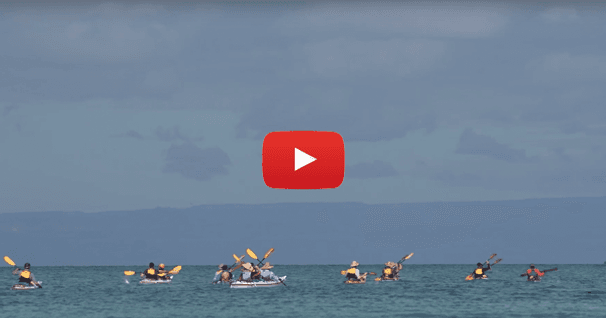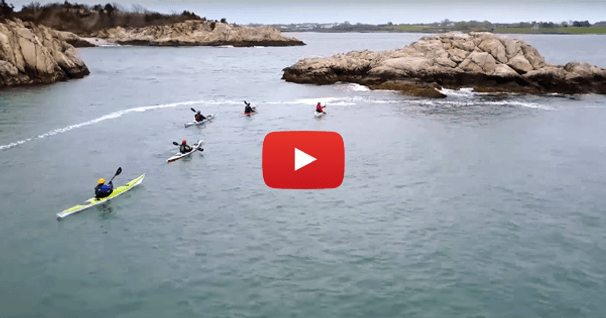How to Deal with Wind While Paddling
Although kayaking is something that almost anyone can enjoy, kayaking in windy conditions presents some real challenges and safety concerns. And so in this video, we are going to talk about how to deal with wind when you are paddling.
Headwind
The first thing we are going to talk about is paddling into a headwind. And the good news is that paddling in the headwind is actually one of the more stable ways to paddle because the waves tend to come straight at you. The biggest challenge is usually the mental challenge because it's hard work paddling into the wind. In fact, if the wind is strong enough, it might just not be worth it. Paddling with the wind is a different story. A tail wind can dramatically speed up your progress. And in open water, it can generate wind waves that are traveling in the same direction, which can provide an additional boost. If the wind waves are small, they are usually manageable. But they can also grow to a point where they become a major hazard for less experienced kayakers. The challenge is that the waves are approaching you from behind, which means you can't see them and this can sometimes even lead to motion sickness. And the only way to deal with that, is to get off the water.
Crosswind
The trickiest wind conditions are when the wind is blowing from a side angle. Because your kayak will want to turn into the wind rather than in keeping on its course. This tendency of kayaks to turn into the wind is called Weathercocking, and its one of the main reasons that a lot of touring kayaks come with rudders or skegs. The rudder is used to steer your kayak to counteract its desired weathercock. The skeg does the same thing, although it works a little differently. The depth that the skeg is deployed dictates how much effect it will have. For example, when the skeg is fully retracted, your kayak will turn into the wind while you are paddling. When the skeg is fully deployed, your kayak might even turn down-wind instead. The trick to using the skeg is to deploy it enough to counteract the wind and hold a straight course while you're paddling. Now, if you have wind and waves coming in from the side, keeping your course and staying in balance becomes even more challenging.
Wind & Waves
The bottom line is that paddling in windy conditions is a lot of work. But paddling in windy and wavy conditions is hard work, extremely challenging, and potentially dangerous because if you do capsize and swim, rescues are much more complicated in these conditions. What this means, is that you need to check the weather forecast before you head out. And unless you are completely confident in your self-rescue skills, or your ability to re-enter the kayak from the water in rough conditions, then you need to stick to water that's sheltered from wind and waves.
TAHE 10'6 & 11'6 SUP-YAK Inflatables
2-in-1 Kayak & Paddle Board complete packages for single or tandem use.
Related Articles
When a situation occurs while paddling in a group, conditions don't stop. Learn some pointers on how to…
Whenever you're paddling, there's safety in numbers and so it's generally not a good idea to paddle…
River obstacles are serious hazards on any waterway - from placid, slow-moving streams to raging,…
Here's a list of ten tips that I found useful when paddling with different groups. Paddling group…




